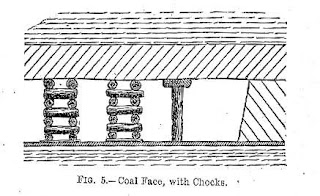global distribution of mineral deposits
GLOBAL DISTRIBUTION OF MINERAL DEPOSITS
Copper and Nickel
A large proportion of the resources of this metal are tied up in a single type of deposit, the so-called “porphyry copper” or simply “porphyry” deposits . These deposits are directly associated with subduction and thus are found in island arcs and convergent margins. This is the origin of the string of deposits that extends along the entire western margin of North and South America (Fig.a) and throughout the islands of the southwest Pacific (Indonesia, Philippines, etc.). Large deposits of the same type are also found in accreted island arcs that have been incorporated into continental collision zones, as in the Alpine-Carpathian-Himalayan belt. Another major class of copper deposits formed in mature sedimentary rocks in intracratonic basins, as in the deposits of the central African “copper belt”.
Copper is also found in deposits associated with volcanic rocks, as in the volcanogenic massive sulphide (VMS) deposits such as Kidd Creek and Bathurst in Canada, and those of the Iberian belt and the Urals, and in deposits associated with shales, such as Mt Isa in Australia (Fig. a).
It is also mined from deposits in magmatic intrusions, most of which form in intracratonic settings. Two important examples formed in very different ways. The Norilsk deposits in northern Siberia are associated with a large igneous province and those of the Sudbury area in Canada formed during crystallization of a melt sheet created by the impact of a large meteorite. Another unusual example of a copper ore body is the Phalabora intrusion, a carbonatite emplaced in the Archean Kaapvaal craton.
In many magmatic deposits, copper occurs together with nickel (Fig. b). This is the case for most major magmatic deposits, not only Sudbury but also Norilsk in Russia, Voisey’s Bay in Canada and Jinchuan in China.
Another class of nickel deposit is hosted by komatiite, a type of ultramafic lava that erupted only in the Archean and early Proterozoic. Komatite-hosted Ni-Cu deposits are therefore restricted to the oldest parts of the earth’s crust, in the greenstone belts of Australia (Kambalda), Canada (Thompson) and Zimbabwe.
But not all nickel deposits are magmatic; another major type is nickel laterite and for these the distribution is quite different. Whereas crustal structure and tectonic setting influence the location of the magmatic variety, laterite is a type of soil that develops at the surface of the Earth in hot, humid climates. All deposits of this type are located in regions that are relatively close to the equator, or were close to the equator when the deposits formed. Major lateritic Ni deposits are located in New Caledonia, Indonesia, Cuba, Brazil and Australia (Fig. 2.1b).

Iron and Uranium
Most major iron deposits (Fig. c) formed in a very specific geological setting during a unique period of Earth history. About 90 % of iron ore is mined from “banded iron formations”, a type of chemical sediment that precipitated from seawater on shallow continental platforms during the early Proterozoic.This period in Earth history coincided with a marked increase in the oxygen content of the atmosphere and oceans.
Most of the world’s great iron deposits are therefore found in sedimentary sequences overlying Archean cratons; in Brazil (Carajas, Minas Gerais), Australia (Hamersley), South Africa (Sishen) and Canada (Labrador Trough), as well as in newly discovered deposits in Guinea (Simandou), and Zanaga (Republic of Congo). An exception is the Kiruna deposit in Sweden, an enormous magnetite deposit of magmatic or hydrothermal origin.
An important class of Uranium deposits are localized at unconformities at the base of Proterozoic sedimentary basins that overlie Archean cratons in northern Canada (Cigar Lake, Rabbit Lake) and northern Australia (Ranger). Hydrothermal deposits in the USA (McArthur River, Pandora, Alta Mesa) and through central Asia occur in younger sedimentary basins. Two notable examples where uranium is produced in multi-element deposits are Olympic Dam in Australia and the Witwatersrand conglomerates of South Africa (Fig. d). The Rössing deposit in Namibia is magmatic, Randstad in Sweden occurs in black shales, and the Yeelirrie deposit of Australia is hosted by surficial sediments (calcretes).










Comments
Post a Comment